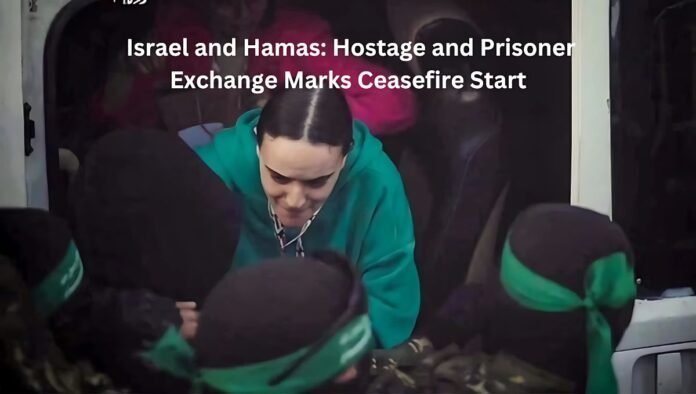Key Highlights of the Ceasefire Deal
The long-awaited ceasefire between Israel and Hamas officially commenced on January 19, 2025. This 42-day truce aims to de-escalate tensions and bring temporary peace to the region. As part of the agreement, both parties agreed to exchange hostages and prisoners in a phased manner.
First Phase of the Ceasefire Agreement

The first phase involves the release of 33 Israeli hostages and 737 Palestinian prisoners and detainees. On the first day, Hamas released three Israeli hostages, while Israel freed 90 Palestinian prisoners.
Exchange of Hostages and Prisoners on Day 1
Three Israeli women—Romi Gonen, Emily Damari, and Doron Steinbrecher—were released by Hamas. These hostages had been held in Gaza since the October 7, 2023, attack. On the other side, Israel sent 90 freed Palestinian prisoners to the West Bank town of Beitunia, where their arrival was celebrated with joy and cheers.
https://www.youtube.com/watch?v=tHHe_keQSuIDetails of the Hostage and Prisoner Releases
Israeli Hostages Released by Hamas
The release of the three women marked the beginning of the ceasefire deal. Their return brought relief to their families and Israel, highlighting the possibility of further exchanges in the coming days.
Palestinian Prisoners Welcomed Back Home
The freed Palestinian prisoners were transported in two buses to the occupied West Bank. Emotional scenes of families reuniting unfolded as the prisoners arrived, sparking celebrations across the region.
Also Read: India’s Bowling Strategy for Champions Trophy 2025: Spin-Heavy Gamble or Masterstroke?
Challenges and Delays in Implementing the Truce
Delayed Start of the Ceasefire
Although the ceasefire was scheduled to begin earlier, it was delayed by three hours. Israeli Prime Minister Benjamin Netanyahu insisted on receiving a list of hostages from Hamas before allowing the truce to take effect. Hamas cited “technical and field reasons” for the delay but reassured its commitment to the agreement.
Netanyahu’s Conditions for Hostage Lists
Netanyahu’s firm stance added pressure on Hamas to comply with the terms. His warning that the ceasefire would not begin without the hostage list highlighted the fragile trust between the two sides.
Continuing Tensions Despite the Agreement
Ongoing Israeli Strikes in Gaza
Despite the ceasefire, Israel’s military continued its operations in Gaza. On the first day, fresh strikes resulted in the deaths of eight Palestinians and injuries to 25 others. The Israeli Army spokesperson stated that the military remains “fully ready” to respond if Hamas violates the agreement.
Casualties During the Initial Ceasefire Period
According to Gaza’s health ministry, ongoing Israeli attacks have claimed more than 70 Palestinian lives since the ceasefire officially began. This has raised concerns about the sustainability of the truce.
The Broader Context of the Ceasefire Agreement
Mediators of the Agreement
The truce was brokered by the United States, Qatar, and Egypt, who played key roles in facilitating dialogue between the two sides. These nations aim to pave the way for a long-term resolution to the ongoing conflict.
The Toll of the 15-Month-Long Conflict
The war, which has lasted over 15 months, has devastated Gaza. Nearly 47,000 Palestinians have lost their lives, according to data from Gaza’s health ministry. The ceasefire brings a glimmer of hope for those affected, but challenges remain in achieving lasting peace.
Conclusion
The ceasefire between Israel and Hamas is a critical moment in a deeply divided region. The release of hostages and prisoners on the first day symbolizes hope for the countless families affected by the conflict. However, the road to lasting peace remains fraught with challenges. With ongoing military actions and underlying mistrust, both sides must work diligently to uphold the terms of the agreement.
The involvement of key international mediators highlights the importance of global support in resolving such protracted conflicts. This ceasefire, though fragile, is a reminder of what can be achieved through diplomacy and compromise. As the truce progresses, the world watches with cautious optimism, hoping for a future where peace is more than just a temporary pause in hostilities.









